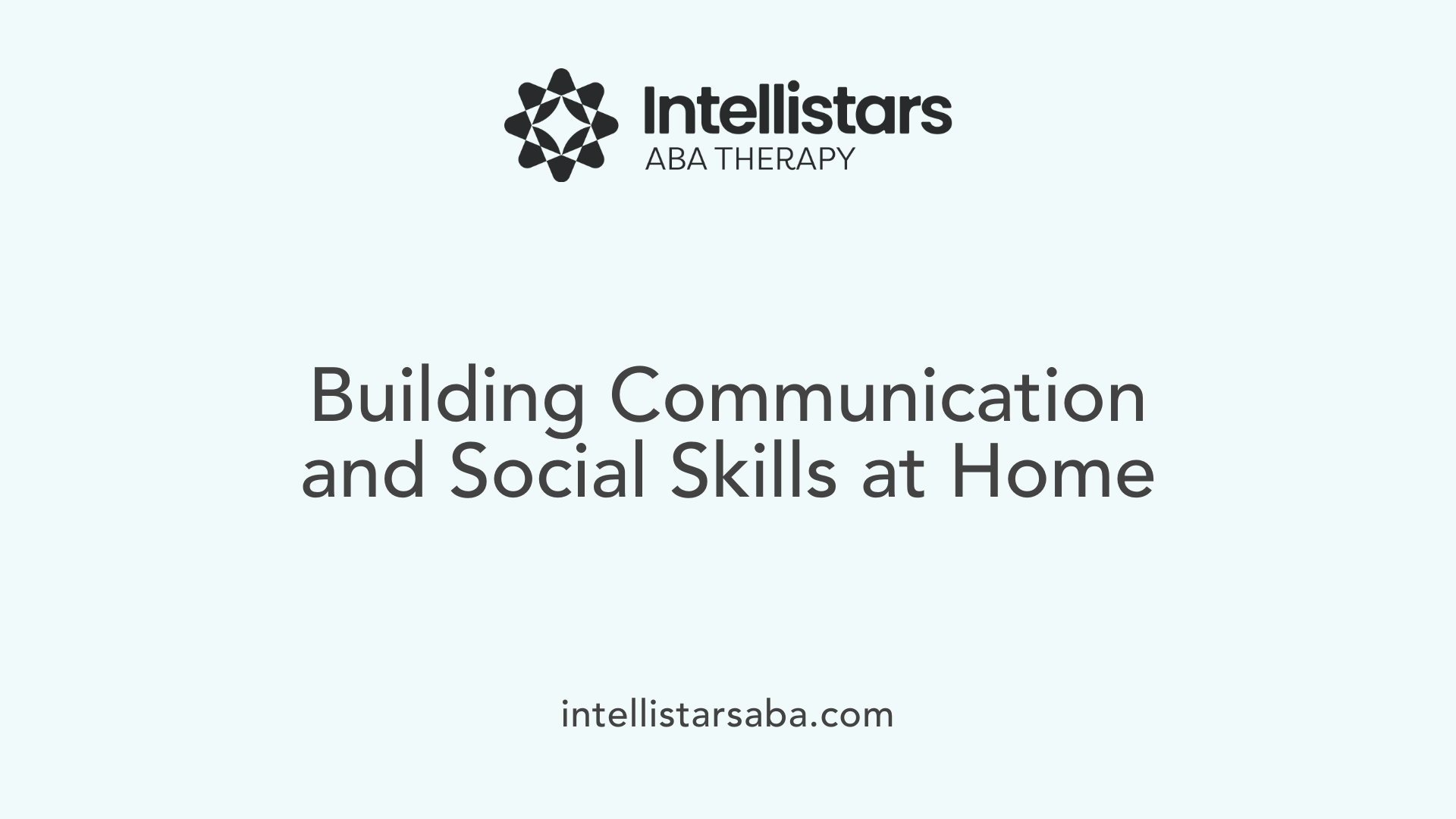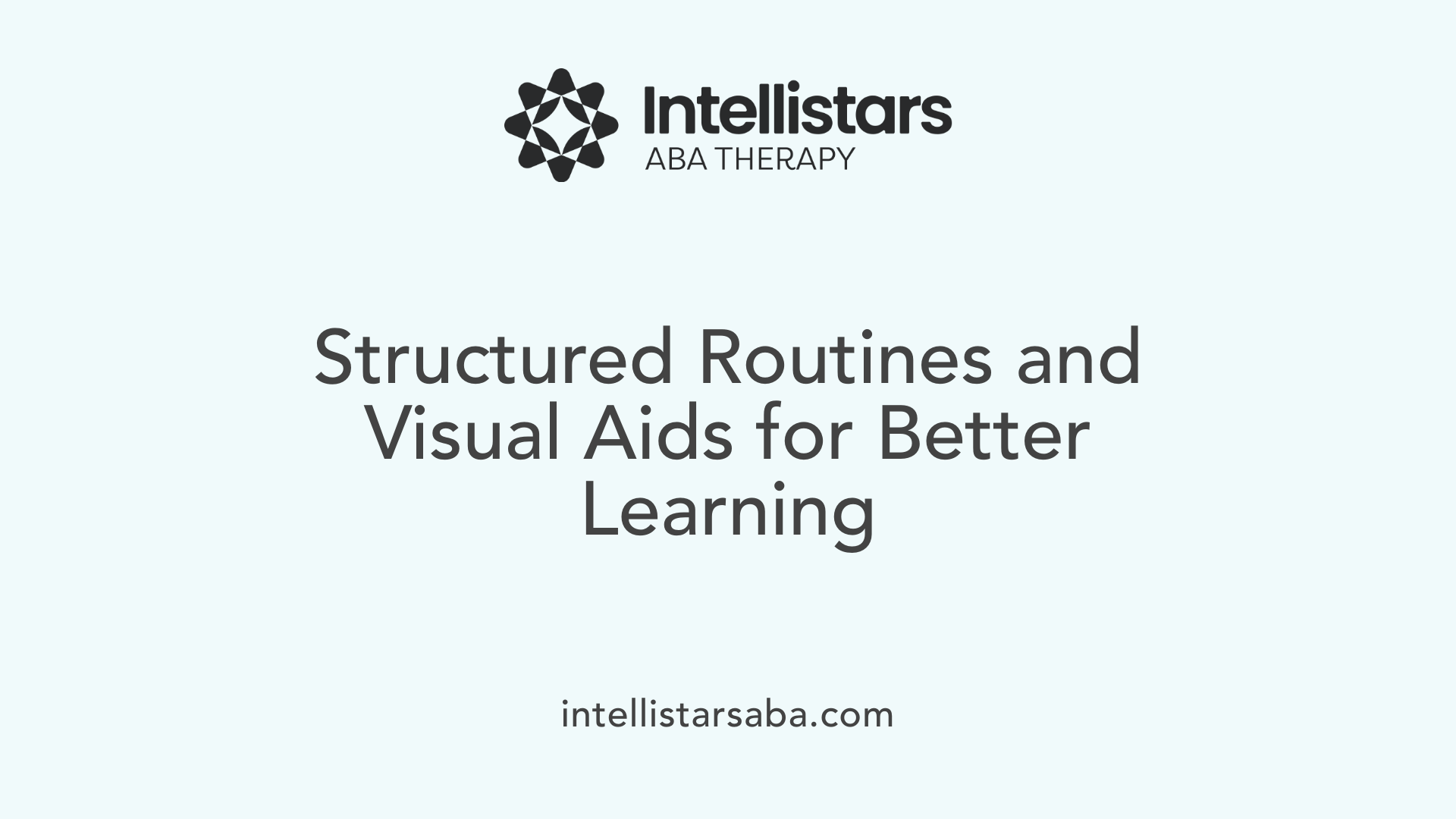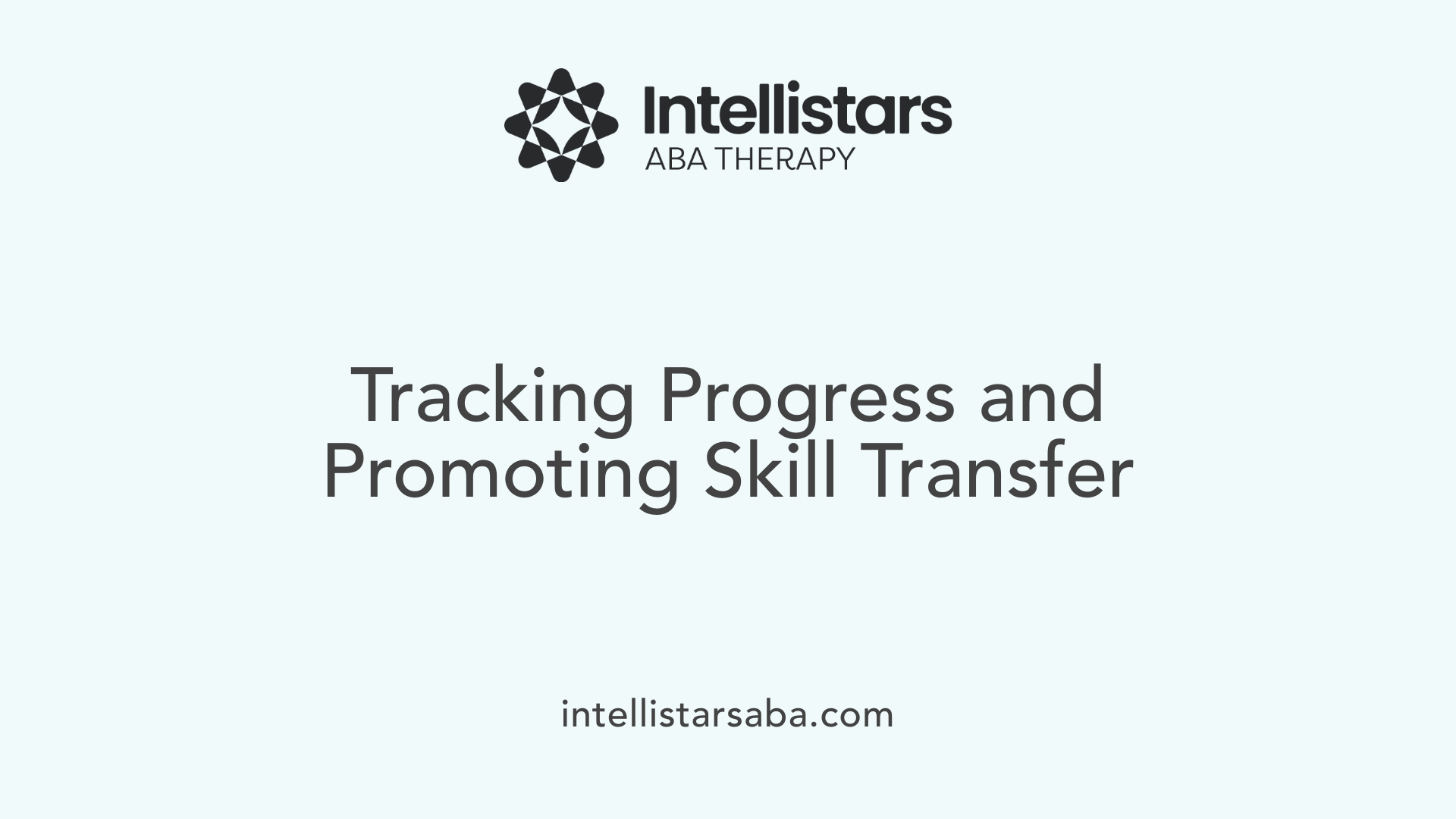Understanding How ABA Therapy Supports Everyday Skills
Applied Behavior Analysis (ABA) is a scientifically validated approach recognized for its effectiveness in teaching essential life skills to children with autism. When delivered in a home setting, it becomes a powerful tool for fostering independence, confidence, and greater participation in daily routines. This article explores how home-based ABA therapy develops vital living skills, its benefits, methods used, and practical strategies to maximize outcomes.
The Foundations of ABA in Developing Daily Living Skills

How does ABA therapy develop daily living skills?
Applied Behavior Analysis (ABA) employs structured, evidence-based strategies to help individuals acquire essential daily skills. A core method is task analysis, where complex activities like dressing or cooking are broken down into smaller, manageable steps. Therapists teach each step separately, providing consistent prompts and positive reinforcement once a step is mastered.
For example, in teaching personal hygiene, a therapist might start with simple tasks like turning on the tap or brushing teeth, gradually progressing to more complex routines. Using visual supports such as visual schedules or cue cards enhances understanding and memory. Reinforcement, such as praise or rewards, motivates children to practice and retain skills, leading to more independence.
Other techniques include natural environment teaching (NET) and discrete trial training (DTT), which facilitate practicing skills across various settings. This approach ensures that skills are not learned in isolation but are functional and practical in everyday life.
How can ABA therapy be used to improve life skills and independence?
ABA therapy customizes interventions based on each child's individual needs, focusing on real-life skills like communication, self-care, household chores, and social interactions. Through breaking tasks into steps, therapists teach children to navigate daily routines effectively.
For instance, children might learn to organize their laundry, cook simple meals, or use public transportation with structured guidance, prompting, and reinforcement. Gradually, the complexity increases, fostering confidence and autonomy.
Family involvement is vital; parents and siblings participate in training to reinforce skills outside therapy sessions. Visual aids, social stories, and routine charts further support skill generalization across different environments. This comprehensive, personalized approach helps children become more self-reliant, reducing dependency on caregivers and promoting social and community participation.
The Unique Role of Home-Based Settings in Skill Acquisition
What are the benefits of home-based ABA therapy in enhancing daily living skills?
Home-based ABA therapy provides a natural and comfortable setting tailored to the child's daily environment. This familiarity helps children learn and practice vital skills more effectively, as they can directly apply what they learn during therapy to their everyday routines. For example, practicing dressing, grooming, or household chores in the home makes these skills immediately relevant and easier to transfer to real-life situations.
One significant advantage is the promotion of generalization. Skills learned in the home are more likely to transfer to other settings like school or the community, boosting independence across environments.
Parental involvement is a cornerstone of home-based therapy. It allows caregivers to participate actively through modeling, prompting, and reinforcement. This continuous reinforcement outside sessions helps solidify skills and fosters consistency, which is crucial for progress.
Furthermore, conducting therapy at home reduces logistical challenges such as travel and scheduling conflicts. It creates a convenient, flexible learning space where therapy can be adapted based on the child's energy levels and daily routine, making sessions more engaging and productive.
Overall, home-based ABA therapy not only improves the acquisition of daily living skills but also enhances the child's confidence and comfort, resulting in meaningful, sustainable progress.
Techniques and Activities That Enhance Daily Living Skills
How does ABA therapy teach practical life skills?
ABA therapy uses a range of proven strategies to help individuals develop essential daily skills. One of the primary methods is task analysis, which involves breaking complex tasks into small, manageable steps. For example, learning to dress or cook can be divided into simple, sequential actions. Prompts and cues are used along the way—such as visual or verbal hints—to guide the individual through each step.
Reinforcement plays a critical role, with positive feedback like praise, rewards, or tokens encouraging continued progress. These techniques are tailored to the person's needs, ensuring skills are learned efficiently and confidently. This structured approach not only accelerates skill acquisition but also helps maintain motivation, making everyday routines more manageable.
What specific activities are used in home ABA sessions?
Home-based ABA sessions include a variety of engaging activities designed to promote independence and develop practical skills. Some common tasks involve color recognition activities using household items, such as matching colored cups or utensils. Communication boards and visual schedules are used to help children understand routines and express their needs clearly.
Real-life activities are central to therapy, such as cooking simple meals, folding laundry, or cleaning house. These tasks are broken into steps, and children are guided through them with prompts. Visual supports like picture cards or step-by-step lists enhance understanding and reduce anxiety.
Reinforcement continues to be vital—praise, tokens, or other rewards are provided to motivate progress. The focus is on making learning both fun and relevant, which fosters greater independence in daily routines and community activities.
Techniques Covered in Daily Skills Training
| Technique | Description | Example |
|---|---|---|
| Task analysis | Breaking down complex tasks into smaller steps | Dressed in sequence: shirt, pants, shoes |
| Reinforcement | Using positive feedback to encourage behavior | Praise, stickers, or tokens for completed chores |
| Prompting | Providing hints, cues, or assistance to guide behavior | Verbal prompts or visual cues during activities |
| Natural environment teaching (NET) | Practicing skills in real-life settings for better generalization | Grocery shopping, using public transit in daily life |
By integrating these strategies into daily routines, ABA therapy effectively promotes lasting independence, equipping individuals with essential life skills for everyday success.
Developing Communication and Social Skills in a Familiar Environment

How are communication skills improved through ABA?
ABA therapy employs specific, structured techniques to enhance communication abilities. Two common methods are discrete trial training (DTT) and natural environment teaching (NET). DTT involves repeated practice of skills in a controlled setting, allowing children to learn functional communication like requesting, labeling, and responding.
In contrast, NET emphasizes teaching communication in natural, everyday situations. This method encourages children to use skills spontaneously, making learning more relevant and effective. Both approaches focus on helping children express needs and understand routines, which can significantly reduce anxiety and improve social interactions.
Visual tools such as picture communication boards, visual schedules, and social stories are often integrated. These supports help children recognize and use symbols to communicate, fostering greater independence and confidence.
How does home-based therapy enhance social interactions?
Home-based ABA therapy creates a natural context for practicing social skills. Within the familiar environment of home, children are more comfortable and willing to engage. Therapy sessions often involve family members, encouraging natural, family-centered social interactions.
By practicing social exchanges, turn-taking, and sharing in a safe space, children build confidence and develop essential social skills. This setting also reduces the stress linked to unfamiliar environments or transitions, making it easier for children to apply learned behaviors.
therapists encourage parents and siblings to actively participate, model appropriate interactions, and reinforce social behaviors outside of formal sessions. This consistent practice helps children generalize skills across various daily contexts, leading to more meaningful social development.
Visual Summary
| Technique | Focus Area | Method | Environment | Additional Notes |
|---|---|---|---|---|
| DTT | Communication | Discrete Practice | Structured | Repetition for mastery |
| NET | Communication | Function-based | Natural & Home | Spontaneous use |
| Visual Supports | Communication | Pictures, Schedules | Everywhere | Enhances understanding & expression |
| Family Involvement | Social Skills | Modeling & Reinforcement | Family & Home | Promotes generalization |
Implementing these strategies within the home ensures that children develop communication and social skills in real-life contexts, reinforcing their ability to interact confidently and independently.
Fostering Independence and Functional Skills
What life skills does ABA target to promote independence?
Applied Behavior Analysis (ABA) focuses on teaching essential skills that help individuals become more autonomous. It targets personal hygiene routines such as bathing, grooming, and toilet training, along with daily tasks like dressing and mealtime behaviors. Household chores like washing dishes, cleaning, and laundry are broken down into simple steps, making them manageable and easier to learn.
Furthermore, ABA programs include teaching community navigation skills, such as shopping, using public transportation, and dining out. Safety awareness is also a priority, covering understanding personal safety rules, emergency procedures, and recognizing hazards. These targeted skills build confidence, reduce dependence on caregivers, and promote a sense of competence.
How does ABA help children apply skills in real-life settings?
A core component of ABA is ensuring that learned skills are practical and transferable across various environments. To achieve this, therapies incorporate natural environment teaching (NET) and involve caregivers actively. In natural settings like home, school, or the community, children practice routines and social interactions, which enhances generalization.
Caregiver involvement is crucial in this process. Parents and siblings are encouraged to model, prompt, and reinforce skills outside of therapy sessions. Visual supports, such as schedules and activity cues, also aid in predictability and reduce anxiety, enabling children to apply what they learn effectively in real-life situations.
This approach not only helps children master individual skills but also increases their overall independence, allowing them to navigate daily life with greater confidence and safety.
Role of Visual Supports and Routine Structures

How do visual aids support learning in ABA?
Visual supports, such as visual aids for daily tasks and schedules, play a crucial role in reinforcing learning and providing predictability. These tools help children understand routines and expectations by offering clear, visual representations of activities. Using pictures, symbols, or charts, children can better grasp what to do next, which reduces feelings of confusion and anxiety.
For example, visual schedules can outline the sequence of daily activities, making transitions smoother. These visual cues not only enhance comprehension but also encourage independent participation in daily tasks.
Why are routines important in ABA for daily skills?
Structured routines are vital because they create a predictable environment that facilitates learning. When routines are established, children know what to expect, which decreases sensory overload and behavioral challenges. Consistent routines also provide repeated opportunities for practicing and reinforcing new skills.
For children learning daily life skills, such as dressing or preparing meals, routines help consolidate these skills and make them more automatic over time. Clear, consistent routines foster confidence and independence, empowering children to manage daily tasks more effectively.
| Aspect | Function | Benefit |
|---|---|---|
| Visual aids | Provide visual cues for routines | Enhance understanding and reduce anxiety |
| Daily routines | Establish predictable schedules | Support skill acquisition and independence |
| Custom visual materials | Tailored to individual needs | Increase engagement and compliance |
Incorporating visual supports and structured routines into ABA programs helps children develop essential daily living skills efficiently and confidently.
The Impact of Consistent, Family-Centered Therapy
Family involvement plays a crucial role in the success of ABA therapy focused on developing daily living skills. When parents and siblings actively participate in sessions, observe progress, and reinforce new behaviors, children benefit from consistent support and guidance outside of formal therapy. This ongoing reinforcement helps solidify skill acquisition and boosts confidence.
In addition to family involvement, ongoing assessment and collaboration among professionals are essential. Tools like the ABLLS (Assessment of Basic Language and Learning Skills) and the Vineland Adaptive Behavior Scales allow therapists to monitor progress accurately and adjust intervention strategies as needed. Regular assessments ensure that therapy remains aligned with the child's evolving needs.
Collaboration extends beyond assessment. It includes coordinated efforts among therapists, family members, teachers, and other care providers, creating a unified approach to learning. This teamwork ensures that skills taught in therapy translate seamlessly into everyday environments, enhancing independence and quality of life.
Overall, integrating family participation with continuous assessment and professional collaboration ensures a dynamic, responsive treatment plan. This approach not only helps children acquire essential daily living skills but also promotes a supportive environment where they can thrive and gain greater independence.
Cost-Effectiveness and Emotional Well-Being Benefits
What are the advantages of home-based ABA therapy in terms of cost and emotional comfort?
Home-based ABA therapy offers several notable benefits that make it an appealing choice for families and caregivers. One of the main advantages is its cost-effectiveness. By conducting therapy sessions at home, families can significantly reduce travel expenses associated with transportation to clinics or therapy centers. Additionally, in-home sessions may require fewer overall therapy hours over time if the progress is consistent and well-managed, further lowering costs.
Beyond financial savings, the familiar environment of the home plays a vital role in supporting the child's emotional well-being. When children are in a safe and comfortable space, they are more likely to feel secure and relaxed during sessions. This sense of security can lead to increased engagement and better learning, as children are not overwhelmed by new or unpredictable surroundings.
The calming effect of being at home helps reduce anxiety, making it easier for children to participate actively in therapy activities. With less stress, children tend to develop more positive attitudes toward learning new skills. These emotional benefits foster a supportive atmosphere that promotes sustained progress, making home-based ABA therapy a practical and emotionally considerate approach for many families.
Supporting Learning with Visual Procedures and Fun Activities

How can visual supports enhance learning in ABA?
Visual procedures, such as visual aids and schedules, are powerful tools in Applied Behavior Analysis (ABA). They provide a clear picture of routines and expectations, helping children understand what is expected next. These visual cues reduce anxiety, improve communication, and foster independence by making daily tasks more predictable.
Using visual supports like charts, picture cards, or calendars allows children to grasp routines and social cues more easily. This not only boosts their understanding but also encourages positive social interactions and smoother transitions between activities.
What fun activities support skill development?
Incorporating enjoyable activities makes learning engaging and effective. Color matching exercises using household items are fun ways to reinforce visual recognition and thinking skills.
Activities focused on emotional understanding, such as identifying feelings through pictures or stories, help children recognize emotions, which supports their emotional development.
These activities, integrated into therapy sessions, keep children motivated while reinforcing important skills like color recognition, emotional awareness, and social interaction. Overall, combining visual supports with engaging tasks fosters a supportive learning environment that promotes growth and independence.
Measuring Progress and Ensuring Skill Generalization

How is progress measured in ABA therapy?
Progress in ABA therapy is systematically tracked using standardized assessment tools. Therapists frequently employ instruments like the ABLLS (Assessing Basic Language and Learning Skills) and Vineland Adaptive Behavior Scales. These tools provide a detailed picture of a child's current abilities by evaluating domains such as communication, daily living skills, socialization, and motor development.
Using these assessments at the start of therapy establishes a clear baseline. Regular re-assessments allow therapists to monitor improvements, adjust goals, and tailor intervention strategies effectively. This data-driven approach ensures that therapy remains aligned with the child's evolving needs and capacity for growth.
How is skill generalization achieved?
Generalization—the ability to transfer learned skills across different settings—is a central goal of ABA therapy. To promote this, therapists include practices like natural environment teaching (NET), which involves practicing skills in real-life contexts such as home, community, or school.
Family involvement is crucial for successful generalization. Parents and siblings are trained to reinforce skills outside of therapy sessions. They help create consistent routines and environment-specific prompts that encourage children to apply what they have learned in diverse situations.
Additionally, therapists gradually increase the complexity and variety of settings where skills are practiced. This multi-environment approach ensures that children do not just learn skills in a controlled setting but can confidently use them in daily life, boosting independence and confidence.
| Method | Environment | Purpose | Details |
|---|---|---|---|
| Standard ABA | Controlled therapy sessions | Skill acquisition | Structured tasks with reinforcement |
| Natural Environment Teaching (NET) | Real-world settings, home, community | Skill generalization and application | Practicing in context, with family involvement |
| Family Participation | Home, community, schools | Reinforce skills and promote transfer | Modeling, prompting, routines establishment |
Through such strategies, ABA therapy ensures that children can apply their skills broadly, leading to more meaningful and lasting improvements in their daily lives.
Empowering Independence Through Home-Based Practice
Home-based ABA therapy is a cornerstone method for fostering meaningful, real-world skills in children with autism. Its personalized approach, combined with active family involvement and the familiar setting, significantly enhances the development of daily living, communication, and social skills. By focusing on generalization, ongoing assessment, and practical activities, this approach not only promotes independence but also boosts confidence and emotional resilience, paving the way for a more autonomous future.
References
- How ABA Therapy Helps Build Daily Living Skills | Dream Big
- Home-Based ABA Therapy: Personalized Benefits for Autism
- Incorporating ABA Therapy Activities into Daily Routines at Home
- How ABA Therapy Helps with Daily Living Skills
- ABA Therapy In-Home vs At a Center: 5 Key Differences
- Your Guide to In-Home ABA Therapy
- 6 Home-Based Autism Therapy Options Parents Can Consider
- ABA Therapy
- Autism and Anxiety: Treatment Options and ABA Techniques






